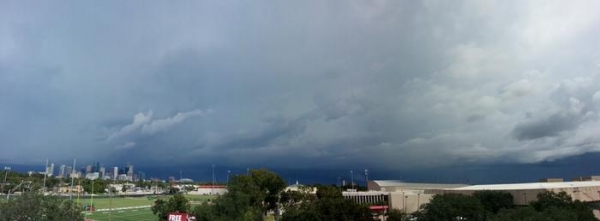A research team led by principal investigator Yongjie Huang, a research scientist with the University of Oklahoma’s College of Atmospheric and Geographic Sciences, has received funding from the Department of Energy to study the complex interactions between convective clouds and their surrounding environments to improve weather prediction.
Convective clouds are a critical component of Earth's climate system. They can lead to various types of high-impact weather events, such as thunderstorms, heavy rainfall or tornadoes. Accurately representing key dynamic and microphysical processes and the interaction between convective clouds and aerosols pose a significant challenge for the numerical weather prediction and Earth system modeling meteorologists rely on.
“There are a lot of uncertainties in weather and climate models,” Huang said. “We need to understand how convection initiates and how convective cells interact with their environment. This will help us improve the computer models that meteorologists use for forecasting.”
Read more at: University of Oklahoma
The TRacking Aerosol Convection interactions ExpeRiment (TRACER) campaign collected data from October 2021 through September 2022 that was used to support this research. Image courtesy of the U.S. Department of Energy Atmospheric Radiation Measurement (ARM) user facility. (Photo Creidt: U.S. Department of Energy Atmospheric Radiation Measurement (ARM))


